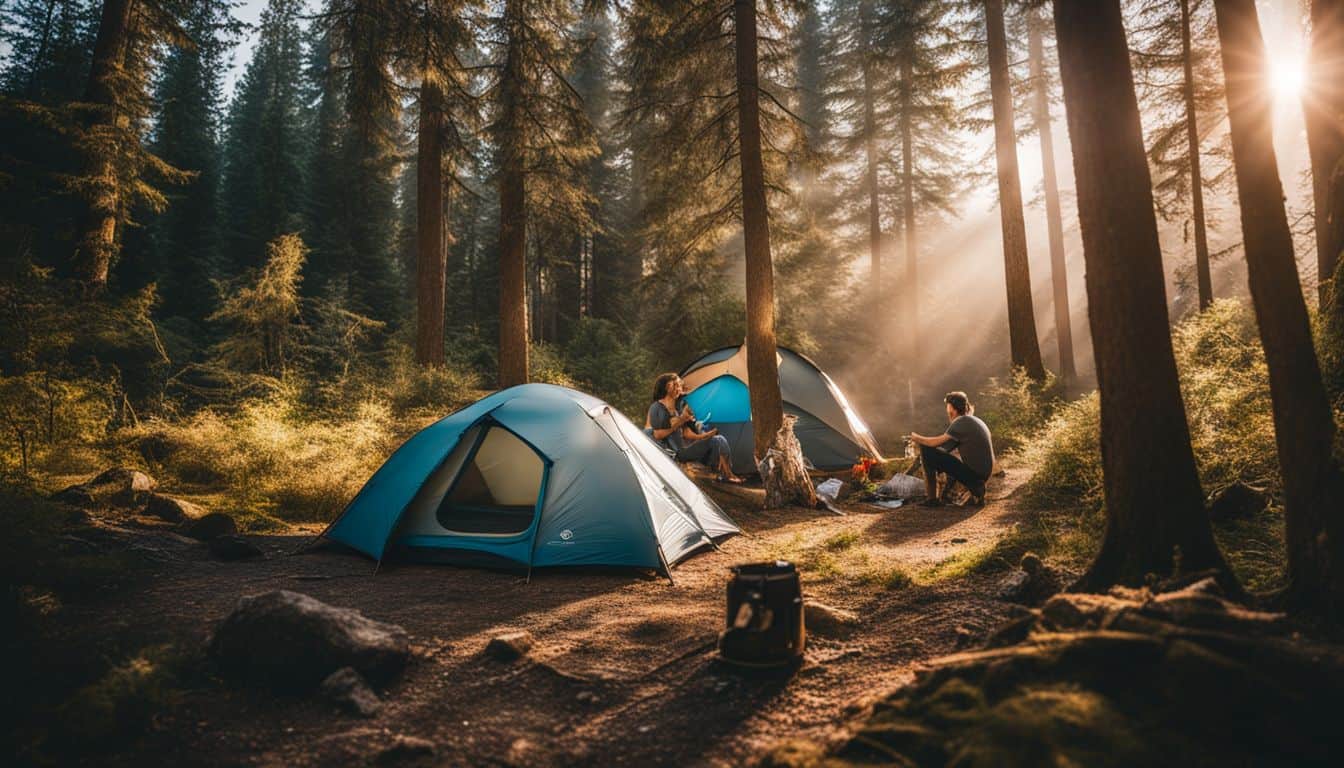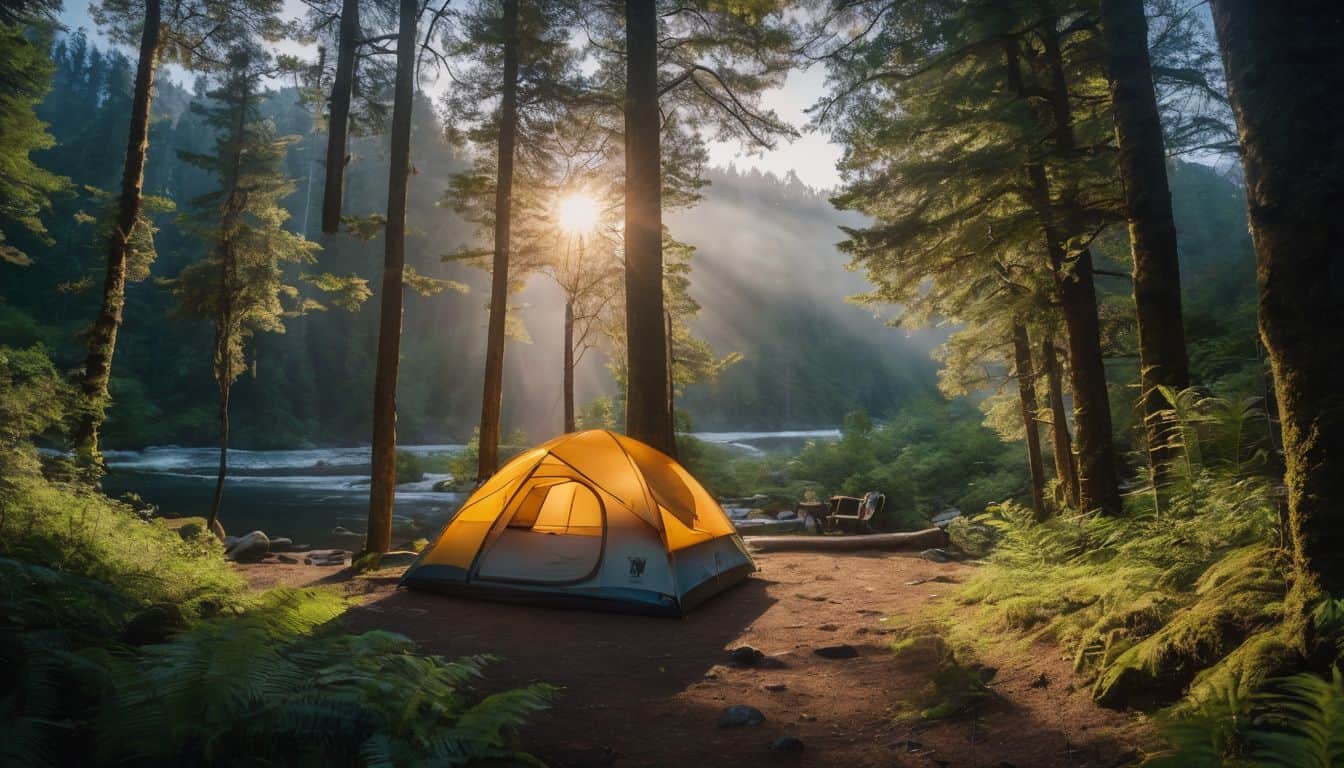Dispersed camping offers a unique opportunity to experience nature in its most pristine form. However, with this privilege comes the responsibility to minimize our impact on the environment. The Leave No Trace (LNT) principles provide an excellent framework for responsible dispersed camping. Let’s explore how to apply these principles in a dispersed camping context.
Plan Ahead and Prepare
Proper planning is crucial for dispersed camping:
- Research the area’s regulations and special concerns
- Prepare for extreme weather and emergencies
- Schedule your trip during off-peak times to reduce impact
- Plan meals to minimize waste and repackage food to reduce trash
- Bring appropriate gear, including a map and compass
When planning your trip, consider water sourcing strategies for dispersed camping to ensure you have access to clean water throughout your stay.
Thorough preparation is the foundation of a successful and responsible dispersed camping experience. Start by thoroughly researching your destination, including any specific regulations or environmental concerns.
This knowledge helps you avoid unintentional harm to sensitive areas. Weather in remote areas can be unpredictable, so pack appropriate gear for various conditions and have a solid emergency plan.

Choosing off-peak times not only provides a more solitary experience but also reduces cumulative impact on popular areas. Careful meal planning and repackaging not only minimizes waste but also reduces the risk of attracting wildlife. Don’t forget essential navigation tools like maps and compasses, as GPS devices can fail in remote areas.
Travel and Camp on Durable Surfaces
When dispersed camping, choosing the right campsite is essential:
- Set up camp on durable surfaces like rock, gravel, or dry grasses
- Stay at least 200 feet away from water sources to protect riparian areas
- In popular areas, use existing campsites to prevent creating new impact zones
- In pristine areas, spread out to avoid creating permanent campsites
- Walk single file on trails, even when muddy, to prevent trail widening
Selecting an appropriate campsite is crucial in minimizing your environmental impact. Durable surfaces can withstand the pressures of camping without long-lasting damage. The 200-foot rule for water sources helps protect these vital ecosystems from contamination and erosion.
In frequently visited areas, concentrating use on existing sites prevents the proliferation of campsite scars. Conversely, in pristine areas, dispersing use prevents the creation of new, lasting impact zones. When hiking, stick to established trails and walk single file to prevent unnecessary widening and vegetation damage, even if it means getting a bit muddy.
Dispose of Waste Properly
Proper waste management is critical in dispersed camping:
- Pack out all trash, leftover food, and litter
- Use a cathole for human waste: dig 6-8 inches deep, at least 200 feet from water, camp, and trails
- Pack out toilet paper and hygiene products
- For washing, use biodegradable soap and carry water 200 feet from water sources
- Scatter strained dishwater to minimize impact
Responsible waste disposal is a cornerstone of Leave No Trace principles. The “pack it in, pack it out” rule applies to all trash, including seemingly harmless items like fruit peels. For human waste, proper cathole technique ensures quick decomposition and minimizes the risk of water contamination. Packing out toilet paper prevents unsightly litter and potential wildlife issues. When washing, the 200-foot rule again applies to protect water sources. By scattering strained dishwater, you allow natural filtration and prevent concentration of soap residues.
Leave What You Find
Preserve the natural environment and cultural artifacts:
- Observe but don’t touch historical structures or artifacts
- Leave natural objects in place, including rocks and plants
- Avoid introducing non-native species
- Refrain from building structures or digging trenches
This principle emphasizes preserving the natural and cultural heritage of the areas we visit. Historical artifacts and structures should be left undisturbed for future visitors and potential scientific study. Similarly, leaving natural objects in place maintains the area’s ecological balance and aesthetic value.
Be mindful of inadvertently transporting non-native species on your gear or shoes, as these can disrupt local ecosystems. Avoid the temptation to build structures or alter the landscape, as these changes can impact wildlife and detract from the wilderness experience for others.
Minimize Campfire Impacts
In dispersed camping areas, campfire management is crucial:
- Consider using a lightweight stove instead of a campfire
- If fires are permitted, use established fire rings or fire pans
- Keep fires small and use only fallen branches that can be broken by hand
- Burn all wood and coals to ash, extinguish completely, and scatter cool ashes
Minimizing campfire impacts is essential for preserving the natural environment in dispersed camping areas. Using a lightweight stove instead of a campfire can significantly reduce the risk of wildfires and environmental degradation. When campfires are permitted, always use established fire rings or fire pans to contain the fire and limit soil disturbance.
Keeping fires small and using only fallen branches offers a sustainable approach to gathering firewood, preventing damage to living trees. Additionally, properly extinguishing the fire and scattering cool ashes helps maintain the beauty of natural areas while mitigating potential hazards. Remember, in many areas, the ecosystem may take years to recover from the impact of a single campfire.
Respect Wildlife
Dispersed camping often brings us closer to wildlife:
- Observe animals from a distance without approaching or following them
- Never feed wildlife, as it can harm their health and alter natural behaviors
- Store food and trash securely to protect both wildlife and your supplies
- Control pets or leave them at home
- Avoid wildlife during sensitive times like mating or nesting seasons
Interacting with wildlife during dispersed camping requires mindfulness and respect for their natural behaviors. Observing animals from a distance ensures their safety and reduces stress on them when in their habitats. Feeding wildlife is detrimental, as it disrupts their natural foraging patterns and can lead to dependence on human food.
Always store food and trash securely to prevent attracting animals to your campsite, and if possible, avoid bringing pets that could disturb local wildlife or create safety issues. Respecting wildlife helps preserve the ecosystem’s delicate balance. Remember, we are visitors in their home, and our goal should be to observe without interfering.
Be Considerate of Other Visitors
Even in dispersed camping areas, consider other visitors:
- Respect others’ experience by keeping noise levels down
- Yield to other users on trails
- Take breaks and camp away from trails and other visitors
- Let nature’s sounds prevail by avoiding loud voices and noises
Being considerate of other visitors is crucial, even in remote areas. Keeping noise levels down allows everyone to enjoy the tranquility of nature, while yielding to others on trails fosters a sense of community among hikers. Taking breaks away from trails and busy campsites ensures that all visitors have access to peaceful settings.
Letting nature’s sounds prevail by avoiding loud conversations enhances the overall experience for everyone in the great outdoors. Remember, many people seek out dispersed camping areas for solitude and a connection with nature. By being mindful of our impact on others’ experiences, we contribute to a positive outdoor community.
Remember to consider seasonal considerations for dispersed camping as weather and conditions can greatly affect your impact on the environment and wildlife.
Conclusion
Before your trip, make sure to familiarize yourself with understanding dispersed camping regulations to ensure you’re camping legally and responsibly. And remember to consider seasonal considerations for dispersed camping as weather and conditions can greatly affect your impact on the environment.
By adhering to these Leave No Trace principles, dispersed campers can enjoy the wilderness while preserving its natural state for future generations. Remember, the goal is to leave the area as you found it, or even better. This approach ensures that the beauty and integrity of our natural spaces remain intact for all to enjoy.

Leave a Reply